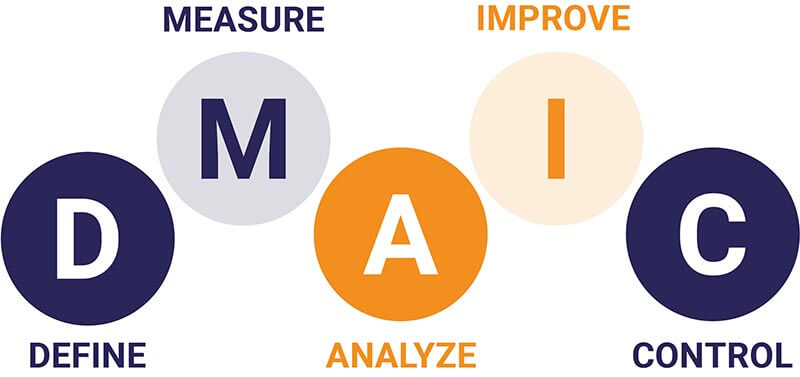Improving Time of Average Call Handling Via Lean Six Sigma
Healthcare Benefits Company Project Overview
Industry
Service
Company
Large Health Insurance Company
Results
$226,000 in pilot sites (Fully implemented across all company call centers, the repeatability and reproducibility of this project will yield a potential of $5.7 million in savings.)
Tools Used
Six Sigma DMAIC
Timeline
Three months
Problem Statement
A large diversified health care benefits company wanted to improve their average call handling times. They found there was a significant variation in Average Call Handle Times (AHT) across each of their call center sites. This was leading to inconsistent call handling performance, efficiency, and customer service. It appeared that call agent productivity varied not only across sites, but also within call center agents. A 90-day pilot project was planned, focusing on five key call center sites.
Business Case
The company knew they had to correct the AHT problem or face expenses greater than their annual budget. Partnering with Juran, the team used Six Sigma DMAIC, a systematic approach and data-driven methodology to reduce product and process defects and variation.
Project Goal
The goal was to increase productivity by two calls per agent per day. The expectation was that the gain would be incorporated into a Comprehensive Customer Contact Model that was adaptable to site-specific Average Handle Times.
Implementing the Project
Multiple factors were analyzed to determine why the average call handle time was so inconsistent. Variables pointed to specific call agent issues, such as their experience in handling claims and their awareness of the expectation on call handle times. Other factors related to the geographic area of the call center and the site’s culture and expectations. There was also variability based on the mix of the type of calls each site was getting, such as retiree and Medicare calls.

Based on these pilot site findings, a Call Service Policy and Procedure document was created and implemented. It implemented a Pro-Active Coaching Model with the goal of coaching call center agents, understanding and reducing long calls, emphasizing productivity, and using available tools more effectively.
The Pro-Active Coaching Model was identified as one of the most powerful process improvements in call handle reduction techniques. Statistical analysis showed that it was both effective and sustainable over time. Call center agents received real-time support from their supervisors if they encountered difficulties, and customers received better service.
Results
Working with Juran, this insurance company was successfully able to understand and modify the variation in AHT performance. They were able to meet and exceed their goals and achieve extremely beneficial results.
In just three months, $226,000 was saved owing to a 5% increase in the number of calls handled in the pilot call centers with the same staffing levels. The company successfully met its goal of two additional calls per agent per day. The AHT decreased by seven seconds on average. These results forecasted savings of $900,000 or 200,000 more calls per year. The repeatability and the reproducibility of this project across all call centers would yield a potential of approximately $5.7 million.
Transform Your Business
Get in touch with us for more information on how we can help your organization attain sustainable results, and start your journey towards world class quality.






